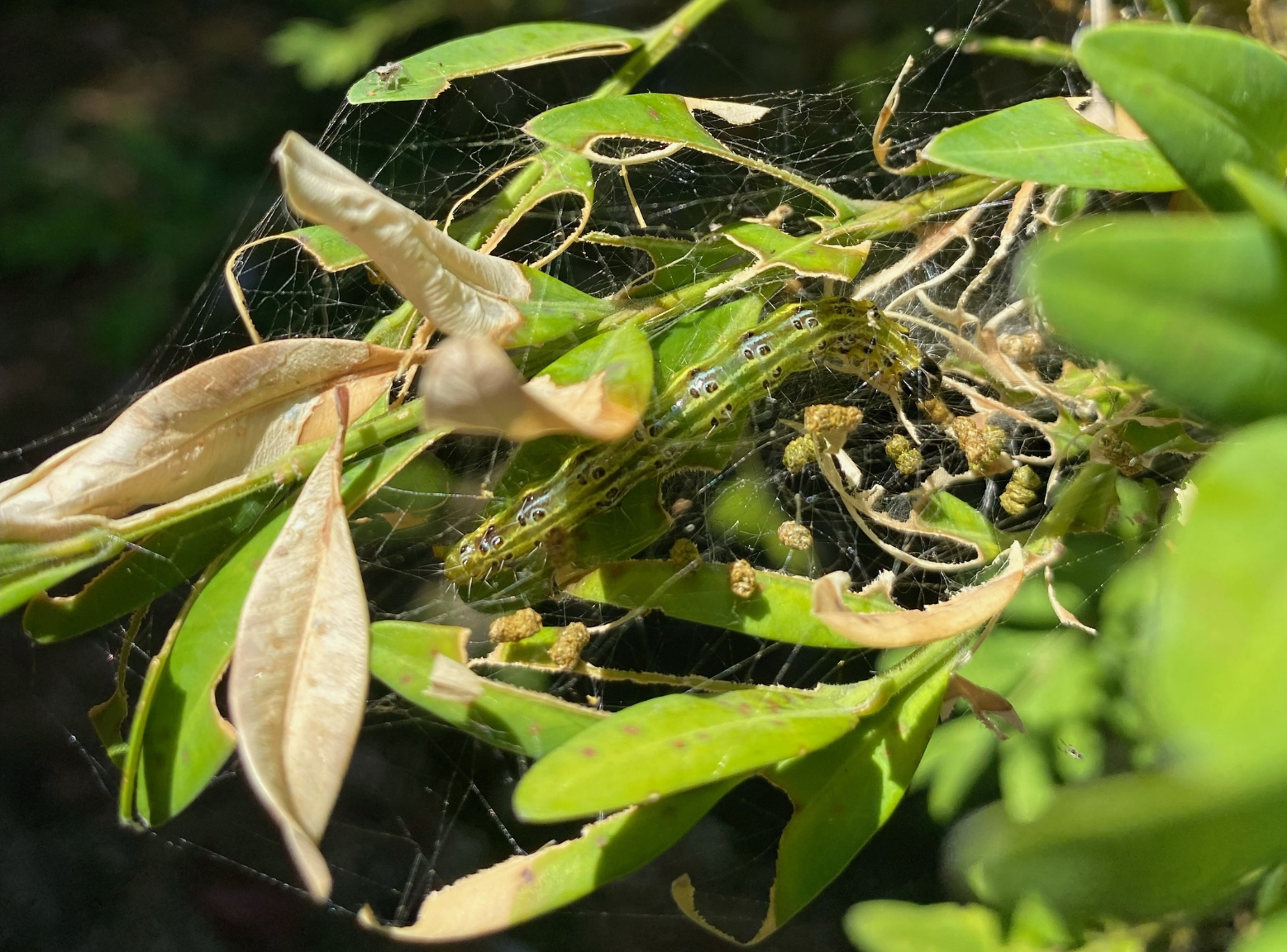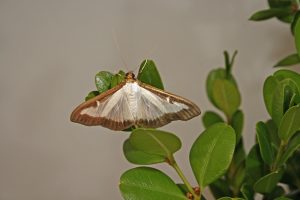Box Tree Moth Found at Private Residence in Kent County, Delaware
Department of Agriculture | Newsroom | Date Posted: Monday, July 15, 2024
Department of Agriculture | Newsroom | Date Posted: Monday, July 15, 2024

DOVER, Del. (July 15, 2024) — The United States Department of Agriculture’s Animal and Plant Health Inspection Service (USDA-APHIS) has confirmed a find of box tree moth (BTM; Cydalima perspectalis) at a private residence in Kent County, Delaware.
The box tree moth is a federally regulated pest that primarily feeds on boxwood species (Buxus spp.). If left unchecked, it causes significant damage and can potentially kill the plants. Boxwoods are a popular ornamental evergreen shrub common to many landscape environments in the United States.
“Box tree moth is an unexpected find in Delaware due to the distance from the only known U.S. detections in New York, Michigan, Ohio, and Massachusetts, with the original introduction in New York in 2021. We are working closely with USDA and University of Delaware Extension to map out the infestations. Still, at this time, only one property in Kent County has a confirmed population and control measures have been implemented,” said Jessica Munski, Delaware Department of Agriculture’s Plant Industries Administrator. “This invasive pest is a good flyer, spreading naturally three to six miles a year, but it is suspected that they can fly up to 20 miles. The aggressive, destructive nature of the caterpillar life stage makes it essential to take quick action as soon as damage is detected because defoliation can occur within ten days.”
The caterpillars, which can grow to 1.5 inches, will start out as lime-green, with black stripes, white spots, hair, and a shiny black head. They then create a large amount of webbing on the plant. The caterpillars are ravenous feeders and, in heavy infestations, can completely defoliate host plants. After the leaves are gone, they feed on the bark, eventually killing the plant.

The adult box tree moth generally has white wings with a thick brown border. It can be hard to find as it is most active at night. The BTM can sometimes be confused with the melonworm moth.
What You Can Do
Delawareans can help prevent this invasive pest from spreading throughout the state’s landscape, by monitoring, reporting, and controlling infestations.
Learn more about the box tree moth at https://www.aphis.usda.gov/plant-pests-diseases/box-tree-moth.
###
Keep up to date by receiving a daily digest email, around noon, of current news release posts from state agencies on news.delaware.gov.
Here you can subscribe to future news updates.
Department of Agriculture | Newsroom | Date Posted: Monday, July 15, 2024

DOVER, Del. (July 15, 2024) — The United States Department of Agriculture’s Animal and Plant Health Inspection Service (USDA-APHIS) has confirmed a find of box tree moth (BTM; Cydalima perspectalis) at a private residence in Kent County, Delaware.
The box tree moth is a federally regulated pest that primarily feeds on boxwood species (Buxus spp.). If left unchecked, it causes significant damage and can potentially kill the plants. Boxwoods are a popular ornamental evergreen shrub common to many landscape environments in the United States.
“Box tree moth is an unexpected find in Delaware due to the distance from the only known U.S. detections in New York, Michigan, Ohio, and Massachusetts, with the original introduction in New York in 2021. We are working closely with USDA and University of Delaware Extension to map out the infestations. Still, at this time, only one property in Kent County has a confirmed population and control measures have been implemented,” said Jessica Munski, Delaware Department of Agriculture’s Plant Industries Administrator. “This invasive pest is a good flyer, spreading naturally three to six miles a year, but it is suspected that they can fly up to 20 miles. The aggressive, destructive nature of the caterpillar life stage makes it essential to take quick action as soon as damage is detected because defoliation can occur within ten days.”
The caterpillars, which can grow to 1.5 inches, will start out as lime-green, with black stripes, white spots, hair, and a shiny black head. They then create a large amount of webbing on the plant. The caterpillars are ravenous feeders and, in heavy infestations, can completely defoliate host plants. After the leaves are gone, they feed on the bark, eventually killing the plant.

The adult box tree moth generally has white wings with a thick brown border. It can be hard to find as it is most active at night. The BTM can sometimes be confused with the melonworm moth.
What You Can Do
Delawareans can help prevent this invasive pest from spreading throughout the state’s landscape, by monitoring, reporting, and controlling infestations.
Learn more about the box tree moth at https://www.aphis.usda.gov/plant-pests-diseases/box-tree-moth.
###
Keep up to date by receiving a daily digest email, around noon, of current news release posts from state agencies on news.delaware.gov.
Here you can subscribe to future news updates.